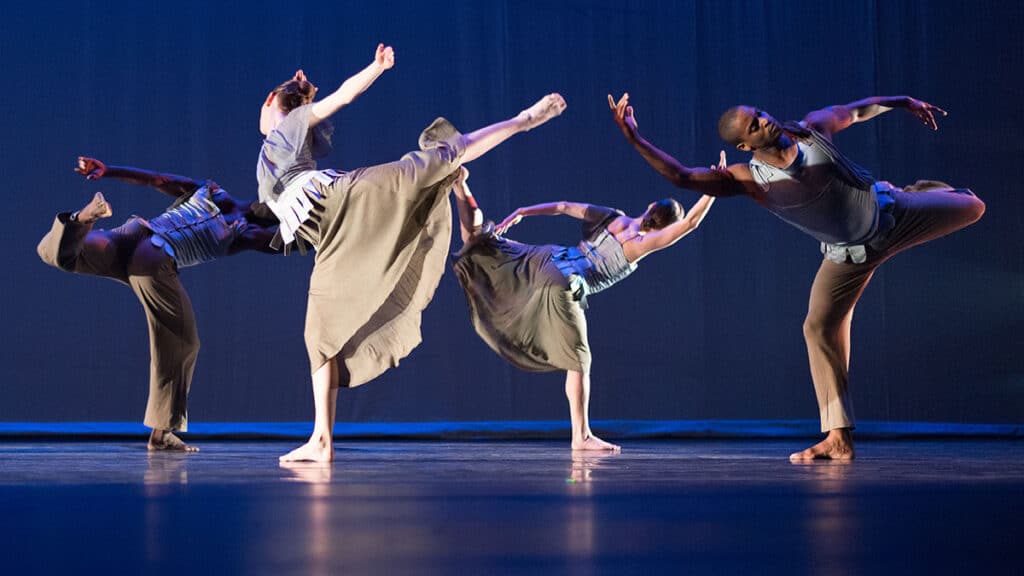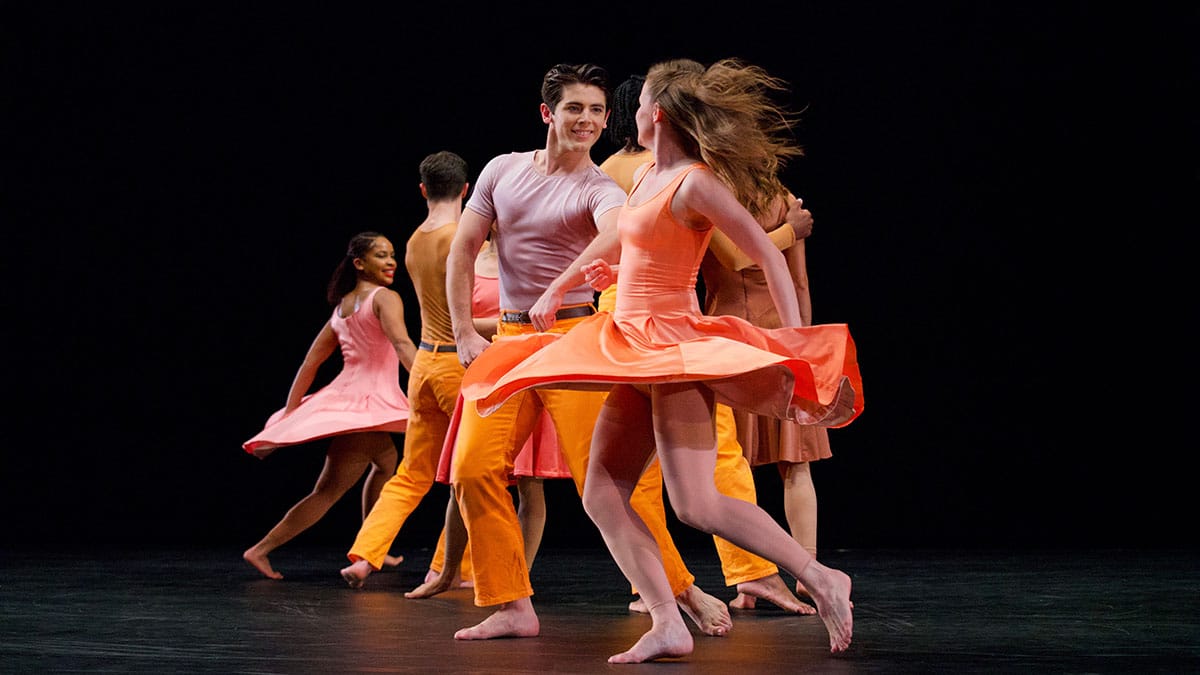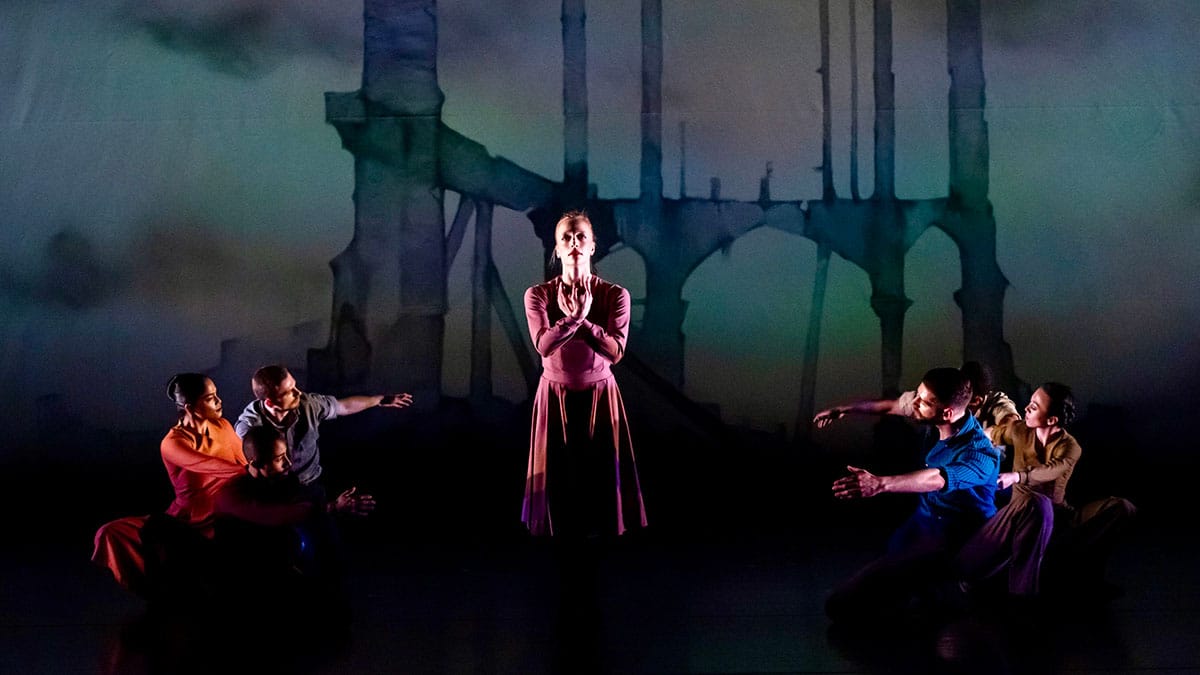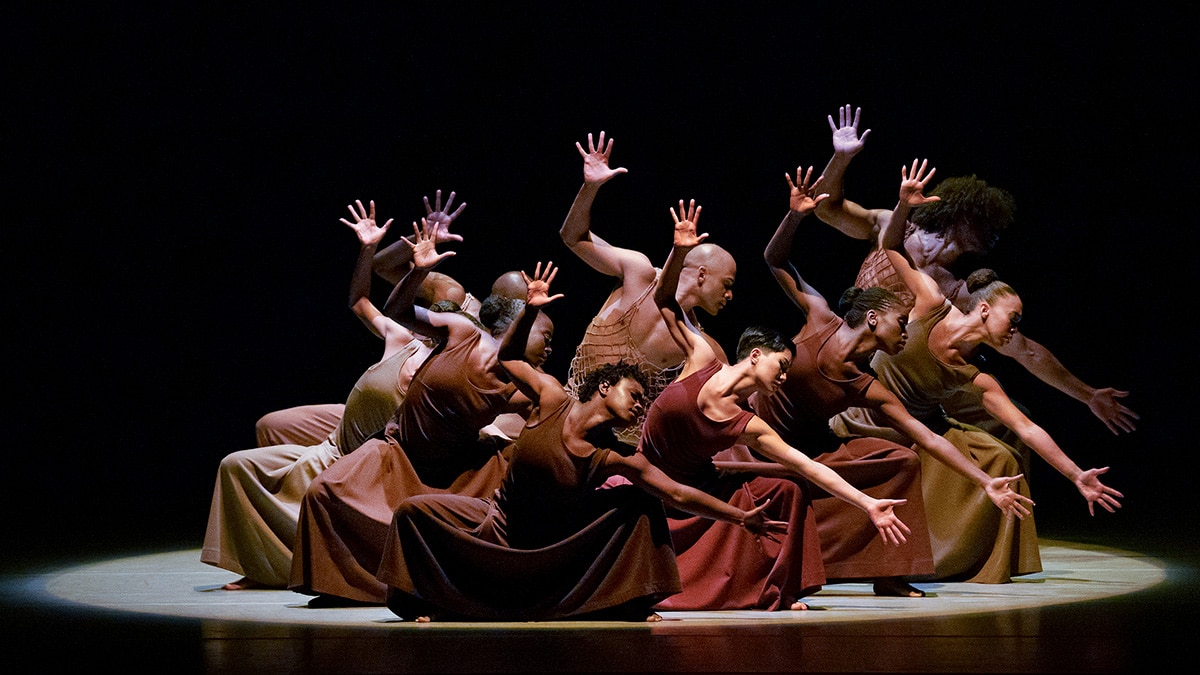Modern Dance in New York City is a transition from the strict technique and styling of classical ballet to the freer forms of contemporary dance.
Modern and contemporary dance are similar. Characteristics of modern dance include dancing the horizontal and walking backwards.
Modern has a specific vocabulary, whereas contemporary is influenced by everything, across the entire world of dance, and from every walk of life.
New York modern dance companies:
- Alvin Ailey American Dance Theater 🇺🇸
- Limón Dance Company 🇲🇽
- Mark Morris Dance Group
- Martha Graham Dance Company
- Paul Taylor Dance Company
Thank you for sponsoring Modern Dance:
Latin Modern Dance
Paul Taylor Dance Company Fall Season Features World Premieres by Robert Battle and Lauren Lovette Backed by the Orchestra of St. Luke’s
DAVID H. KOCH THEATER, Lincoln Center, Manhattan 🇺🇸 🇧🇲
Alvin Ailey American Dance Theater Summer Season Celebrates 50 Years of African American Modern Dance
BROOKLYN ACADEMY OF MUSIC (BAM), Fort Greene 🇺🇸
WHITNEY MUSEUM OF AMERICAN ART, Greenwich Village, Manhattan 🇺🇸
Modern Dance News
New York Theaters

These New York theaters present some modern dance:
- 92nd Street Y, New York
- Baryshnikov Arts Center
- Brooklyn Academy of Music (BAM)
- David H. Koch Theater
- Joyce Theater
- Lincoln Center
- New York City Center
- New York Live Arts
About Modern Dance
Modern Dance is largely the creation of American women, with inspiration from Oriental style and spiritualism, and the support of an adoring Europe. It has three periods:
- The 1900s around turn of the century
- The 1930s, influenced by the Jazz Age
- Post-War 1945 into the 1950s
There are parallels in the development of visual art, ballet, and modern dance:
- Romantic art > Impressionism > Abstraction
- Classical ballet > Neoclassical ballet > Contemporary ballet
- Classical ballet > Modern dance > Contemporary dance
Early Modern Dancers
In the 1891, American dancer Loie Fuller (1862-1928) began experimenting with performance lighting. Though not a trained dancer, she developed her own style of natural movement and improvisation for her stagecraft. She’s one of the mothers of stage lighting.
Isadora Duncan (1877-1927) is considered the mother of American modern dance. She was a free spirit who danced to classical music in tunics, and insisted that her work was high art. The free-flowing tunic was an important part of her dance.
Ruth St. Denis (1879-1968, from Newark) looked to the orient for inspiration. She brought world culture into American dance, and was considered quite exotic. With Ted Shawn, she founded the Denishawn school which trained some of the first generation of modern dance. Shawn founded the Jacob’s Pillow Dance center in Becket, Massachusetts, which is still a very important dance center in the Northeast.
The First Generation
The first generation still had something to prove because modern dance was still young, and not completely accepted.
Martha Graham studied with Denishawn in 1916 and worked with artists she met there, but grew far beyond her teachers. By 1930, she developed her own technique that used contraction and release to build emotional tension. She did some of her foundational work at the 92nd Street Y, and taught movement to many famous dancers and actors.
Doris Humphrey (1895-1958) studied with Denishawn where she was quickly recognized for her creative and teaching skills. She later cofounded Limón Dance Company with José Limón.
Lester Horton (1906-1953) studied with Denishawn. He is known for his technique and theatrical style. He also played with social issues and satire. Ailey Technique is based on Horton Technique.
The Second Generation
Merce Cunningham danced with the Martha Graham Company from 1939 to 1945. He started as a modern dancer, but later led the transition to a more abstract contemporary dance that was not based on emotions. His company is gone, but Cunningham’s influence is forever.
Paul Taylor is from the Juilliard School. He founded his Paul Taylor Dance Company in 1954 while he was a Martha Graham Company soloist from 1955-1962.
José Limón, originally from Mexico, was an important modern dance pioneer. He never saw a dance performance until he moved to New York City in 1928. He is known for being very theatrical, and for empowering male dancers. A student of Doris Humphrey, together they founded Limón Dance Company in 1946. They did some foundational work at the 92nd Street Y. Limón technique remains one of the standard dance techniques.
Alvin Ailey was a student of Lester Horton in Los Angeles. He founded what became Alvin Ailey American Dance Theater in 1958 at the 92nd Street Y. Ballet is generally considered the pinnacle of dance, but Alvin Ailey American Dance Theater is the equal of any of the world’s great ballet companies. They are the company that popularized modern dance around the world. Ailey’s masterpiece is a spiritual work “Revelations” from 1960. Alvin Ailey American Dance Theater is unique in that every performance has a spiritual dimension.
Mark Morris is one of the greatest living modern dance choreographers. He founded the Mark Morris Dance Group in 1980. His vocabulary is modern after Merce Cunningham. He also choreographs ballets.
Soon after Merce Cunningham began stepping into contemporary dance in the 1940s, the transition from ballet tradition, to modern experimentation, to anything goes contemporary dance was completed.
One of the things that stands out is the pivotal role played by the 92nd Street Y in nurturing young modern dance companies.



